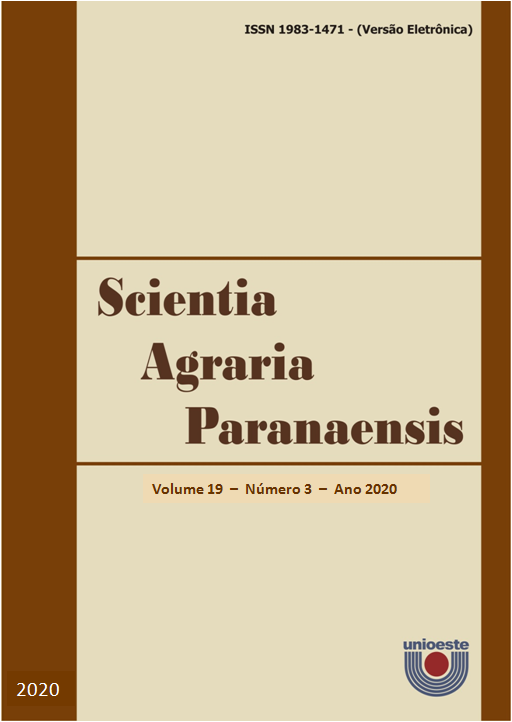Does nitrogen application timing and sources influence barley grain yield?
DOI:
https://doi.org/10.18188/sap.v19i3.24011Resumo
The suitable management of nitrogen (N) fertilization can increase barley grain yield, since it is the nutrient required in greater quantity. In this sense, the source and timing of nitrogen application are relevant factors. The objective was to evaluate the effects of N sources and splitting on the performance of barley. The experiment was carried out under a clayey Cambisol (550 g kg-1), in Curitibanos, Santa Catarina. Factorial randomized blocks were used: three mineral sources of N: urea (45% N); urea with urease inhibitor-NBPT (45% of N) and nitrate (30% of N), associated with two nitrogen splitting fertilization: i) split of the rate of N in two seasons: beginning of tillering and full tillering and ii) single application at full tillering. 100 kg ha-1 of N were applied. There was no interaction between the factors and there was no effect of treatments for plant height, ear length, grains per ear, ears per m² and mass of a thousand grains. Yield was influenced by the N source, where nitrate exceeded the yield from amidic sources by 16%. The splitting of N in two times did not present advantages over the single application. Urea with NBPT was not viable in relation to readily soluble forms of N, with the highest yield obtained with a nitric source.
Downloads
Publicado
Como Citar
Edição
Seção
Licença
Aviso de Direito Autoral Creative Commons
Política para Periódicos de Acesso Livre
Autores que publicam nesta revista concordam com os seguintes termos:
1. Autores mantém os direitos autorais e concedem à revista o direito de primeira publicação, com o trabalho simultaneamente licenciado sob a Licença Creative Commons Attribution que permite o compartilhamento do trabalho com reconhecimento da autoria e publicação inicial nesta revista.2. Autores têm autorização para assumir contratos adicionais separadamente, para distribuição não-exclusiva da versão do trabalho publicada nesta revista (ex.: publicar em repositório institucional ou como capítulo de livro), com reconhecimento de autoria e publicação inicial nesta revista.
3. Autores têm permissão e são estimulados a publicar e distribuir seu trabalho online (ex.: em repositórios institucionais ou na sua página pessoal) a qualquer ponto antes ou durante o processo editorial, já que isso pode gerar alterações produtivas, bem como aumentar o impacto e a citação do trabalho publicado (Veja O Efeito do Acesso Livre).
Licença Creative Commons
Esta obra está licenciada com uma Licença Creative Commons Atribuição-NãoComercial-CompartilhaIgual 4.0 Internacional, o que permite compartilhar, copiar, distribuir, exibir, reproduzir, a totalidade ou partes desde que não tenha objetivo comercial e sejam citados os autores e a fonte.


